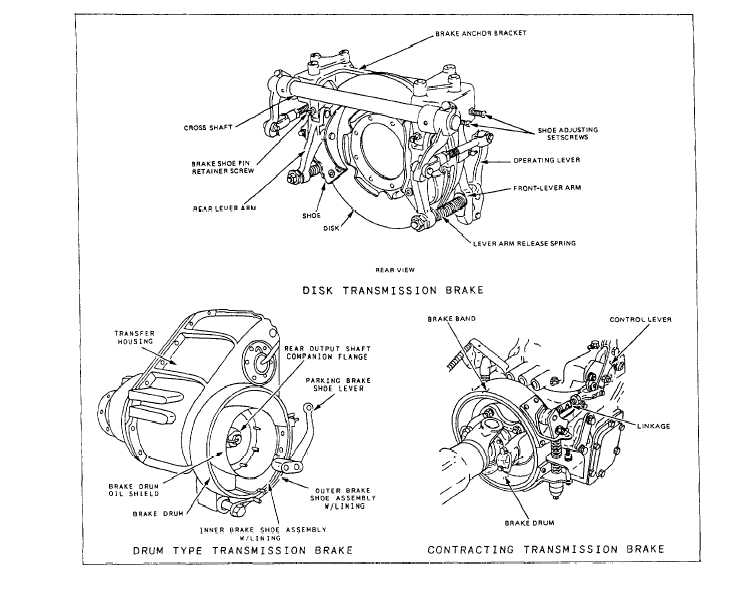hydraulic pressure gauges. All gauges should register zero without lagging. When pressure is noted at the air pressure gauge, a sticking relay piston, damaged or corroded control valve poppet, or a ruptured control valve diaphragm exists. Pressure at the hydraulic pressure gauges indicates a sticking hydraulic piston, a sticking power piston, or a weak or broken piston return spring. If the hydraulic pressure gauges show a slow pressure drop, it indicates a defective check valve (in the hydraulic piston) or a defective residual line check valve.
If the tests indicate external air leakage, tighten the control line connections, and or replace a damaged control line, control line gasket, or double check the valve. For internal air leakage you must remove the unit to replace worn or damaged power piston packing or end plate gasket, and repair or replace the cylinder body or end plate.
If the tests indicate hydraulic fluid leakage, an inoperative control valve, sticking power piston, relay piston, or hydraulic piston, remove the unit for disassembly and repair or replace the worn or damaged parts.
PARKING/EMERGENCY BRAKES
Serviceable parking/emergency brakes are essential to the safe operation of any piece of automotive or construction equipment. Several types of these brakes are manufactured, such as the external contraction, drum, and disk types (fig. 6-13). These are drive line brakes common to heavy construction equipment. These

Figure 6-13. - Examples of drive line emergency/parking brakes, transmission mounted.
Continue Reading